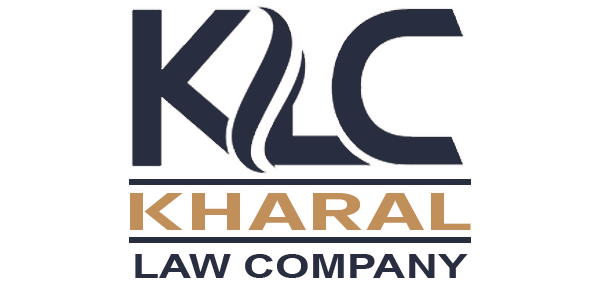For example, here’s what Google does with your data — you can learn how to download your Google data here. Don’t fall for this trick — it only takes a moment to verify a link is safe. Founded in 2013, the site’s mission is to help users turbo vpn review 2020 around the world reclaim their right to privacy.
Short on time? Here’s how to identify fake websites:
It is calculated using the information contained in your Equifax credit file. Lenders use many different credit scoring systems, and the score you receive with Aura is not the same score used by lenders to evaluate your credit. Sometimes the goal of a fake app or website isn’t to steal your information, passwords, or money — but to infect your device with malware. Legitimate brands will always give you the option of paying with more traditional and safer methods — including credit and debit cards, PayPal, or “buy now, pay later” options, such as Klarna and Afterpay. Demonstrate your commitment to online safety and gain many exclusive benefits. If you think you have been a victim of fraud or online harm in the UK, report it to Action Fraud, the UK’s national fraud and cybercrime reporting center
- When you input a URL into a link checker tool, it assesses the website against comprehensive databases of known malicious or phishing sites.
- Fake URLs are a vital component of ‘phishing’ – a scam that involves fraudulently obtaining a person’s data by posing a legitimate, trustworthy entity.
- AVG Secure Browser masks your digital fingerprint to block targeted advertising, malicious extensions, and phishing attacks, helping to prevent identity theft — all for free.
- By checking the website popularity you can find out if a website is popular among Internet users so you can better decide what to do.
- These organizations can take further action and help prevent others from falling victim to the same scam.
- Recognizing these (and many other) red flags can prevent you from compromising your personal details or making unsafe payments.
Examples of fake or scam websites
This covers the most popular browsers, but the process should be quite similar regardless of what browser you’re using. Making sure any website you visit uses HTTPS is another way to make sure the site is safe.
A robust cybersecurity tool also works as an effective scam checker to help you avoid fake websites. Download AVG AntiVirus FREE to get essential virus and malware protection, including our Behavior Shield, which blocks malicious code from hijacking your PC. Plus, you’ll get essential protection against infected downloads and dangerous email attachments. Fake websites are scam web pages that are designed to deceive visitors by looking like authentic websites.
You can quickly determine whether a site has been reported as part of a phishing scam by entering its URL. Install free AVG AntiVirus for Android to prevent viruses, block spyware, and protect your personal data. Download AVG AntiVirus FREE for Mac to block viruses and spyware and protect your personal data. In theory, you should be able to click on the trust seal and see if you can verify it.
Best Antiviruses for Identifying Fake Websites in 2024
Malware distribution sites may also be disguised as trusted pages to infect devices. Such sites often feature suspicious URLs and fake password login pages. For example, a scam site may appear as an online banking website, tricking you into entering your credentials for scammers to steal. On the surface, it’s difficult to tell a scam website from an official one. But by following a few simple steps and looking for red flags, you can avoid giving up sensitive information or money to scammers. In an effort to look more legitimate, scammers often post fake reviews on their websites.
Leverage Your Browser’s Security Settings
” The Better Business Bureau’s Scam Tracker website is also a great place to check for negative reviews about a company. The easiest way to tell that you’re on a fake website is when the domain name doesn’t match the official website for the company. For example, scammers often use domain names that are similar to — or even contain — the official URL within the fake domain how to sell your bitcoin from wallet exodus buy bitcoin to transfer 2020 name. Check a website is an easy-to-use online tool which helps you to determine whether a website is likely to be legitimate or a scam … before you visit it. In contrast, fake sites often display poor design elements such as mismatched fonts, low-resolution images, and inconsistent formatting. Grammatical errors and spelling mistakes in the website content can also indicate a lack of professionalism typical of scam sites.
If you’re still not sure if a website or company is legit or fake, find their contact details and call them. If the number doesn’t exist — or if someone answers with no knowledge of the website — how to buy bitcoin for the first time it’s probably a scam. If you’re already on a website, but can’t tell if the site is legit, look for a privacy policy. Reputable websites should have a privacy policy page, as it’s the law in many countries. Click around the site to find their privacy policy — and be suspicious if you can’t find one.
They use large databases of known phishing sites, malicious URLs, and criteria for suspicious web behavior to assess each site’s safety in real time. For example, tools like Norton’s SafeWeb will give you a safety rating for the website. It’ll provide details on why a site might be considered unsafe, such as hosting malware, having links to phishing activities, or other suspicious behaviors. If the site is deemed risky, the tool will warn you, offering an explanation about the potential dangers.
Phishing links attempt to trick users into clicking links in order to disclose sensitive information, such as login credentials or financial details. They may use tactics such as impersonating trusted entities, creating a sense of urgency or fear, or promising a big reward to manipulate the user’s emotions. Some phishing websites could be using HTTPS to try to pass the legitimacy test — you’ll need to use Domain Name System Security Extensions (DNSSE) to verify that the site really is what it claims to be. Regardless, if a website doesn’t have that padlock, don’t enter your personal details. Whichever legit website checker you choose, bookmark the page to use later — it’s important to test if a site is legit before you do anything sensitive, like enter your credit card details.


